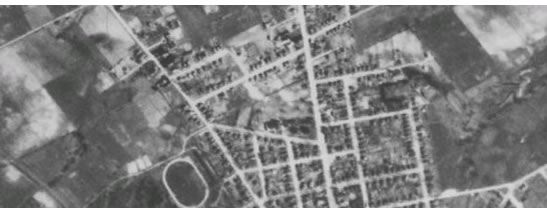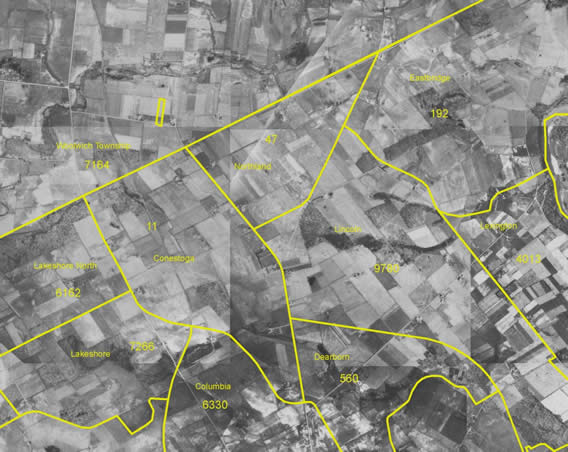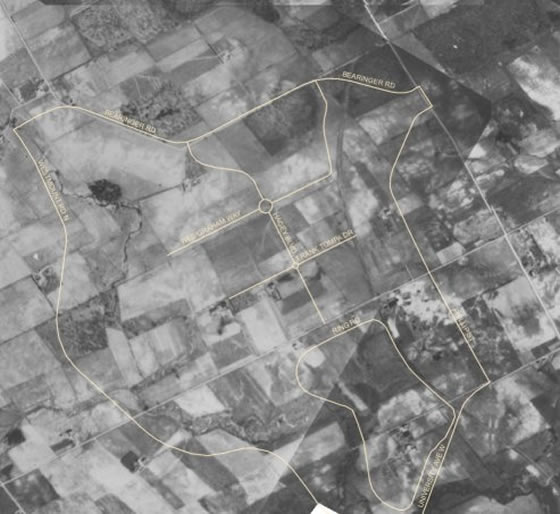

GIS technology provides users with analytical tools at a high level of geographical precision. When an image is georeferenced to the earth's surface, the user can add other information on top of the image that has also been spatially referenced. It may be land use information, census data, recent air photo imagery, current streets, etc. With the GIS tools available, a user can compare the past and the present with very close precision. If the user is interested in studying the loss of forestry, then foresty from one year can be overlayed on top of forestry from another year to study the changes. The images below are some examples of how GIS technology can aide the user in learning about the change in land and its usage.
Georeferenced air photos can be overlaid on top of one another for accurate comparisons City of Kitchener, 1945 |
These two images reveal changes in land over time City of Kitchener, 2007. Imagery : Google Earth |
Comparing these two images reveal very little change in land over time City of Kitchener, 1945 |
City of Kitchener, 1945. Imagery : Google Earth |
City of Waterloo, 1930 |
Adding geospatial layers such as current buildings, ground water and parks helps analyze changes in both human-made and natural features City of Waterloo : 1930 image with 2008 overlays |
City of Waterloo - 1930 image with 2007 streets and parcel overlay (courtesy of Teranet) |
|
This image shows a 1930 photo of the City of Waterloo with current zoning overlay. The pink boundaries represent Residential, the green is Open Space (fields, forests), and the yellow is Inudstrial.
 |
This image in using 2001 Census Data to show population for each community district. We can use census data to learn about community growth over the years.
 |
GIS technology allows the user to place customized files, such as these streets, to locate a specific property such as the University of Waterloo.
Unless otherwise noted, all geospatial datasets used in these images are from the City of Waterloo. The 1930 and 1945 air photos are published by the National Air Photo Library.
Please email any questions, comments or suggestions to :
Eva Dodsworth, Geospatial Data Services Librarian

University Map Library, 2008